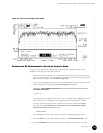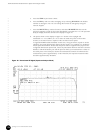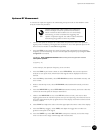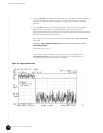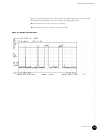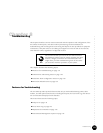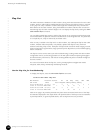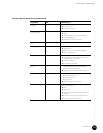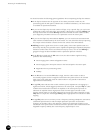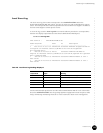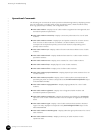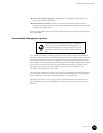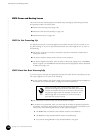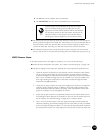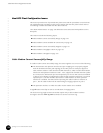
•
•
•
•
•
•
•
•
•
•
•
•
•
•
•
•
•
•
•
•
•
•
•
•
•
•
•
•
•
•
•
•
•
•
•
•
•
•
•
•
•
•
•
•
•
•
•
•
•
•
•
•
•
•
•
•
•
•
Troubleshooting
Features for Troubleshooting
143
Table 45: Flap List Association to Potential Issues
Output Field Value Potential Issues
IM (initial maintenance
retry flaps)
High ! DHCP server issues
! TFTP server issues
! Configuration file issues
SM (missed station
maintenance flaps)
High ! Noise
! Ingress
! Impairments such as common path distortion
! Laser clipping distortion
! Attenuation (too large or too small)
CER (codeword error rate
flaps)
High (with low CERavg) ! Impulse noise
CERavg (average CER) High ! Ingress
! Impulse noise
! Impairments such as common path distortion
! Laser clipping distortion
PAdj (power adjust flaps) High ! High attenuation in the return path
! Changing environmental conditions that affect the
return path such as temperature
! Improper amplification
! Poor amplifier performance
FAdj (frequency adjust
flaps)
High ! Significant frequency error introduced by frequency
stacking multiplexer (sometimes called block
upconversion) in the return path
! Degraded frequency stability in cable modem
SNRavg (SNR average) Low ! Increase in return path noise due to:
! Amplifier thermal noise
! Fiberoptic link noise
! Ingress noise
! High attenuation in the return path
MERavg (MER average) Low Any issues that affect the phase and amplitude of the
signal in the return path:
! Noise
! Impairments
! Non-linear distortions (in lasers and amplifiers, for
example)
! Linear distortions such as group delay variance
! Quality of cable modem transmitter



